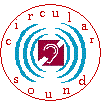LIPREADING
Communicating with DEAF and HARD of HEARING People

What is lipreading?
Lipreading is 'reading' the visual cues of the spoken message; the movements of the lips, the tongue, the lower jaw, the eyes, the eyebrows, the facial expression and gesture. They are all clues for the lipreader. The lipreader will also observe the syllables, the natural flow, rhythm, phrasing and stress of speech.
Is lipreading important?
Yes. Having a hearing loss makes speech sounds quieter, distorted or both. Lipreading is invaluable. For those who have a slight or moderate loss, lipreading will help considerably in 'receiving' the message. Many untrained people lipread unconsciously to some extent and feel happier when they can see the speaker's face. This skill can be greatly extended by lessons. Learning to lipread will help with communication as well as the development of self confidence.
For severely or totally deafened people, lipreading may be the only possible means of everyday communication.
Is it difficult?
Yes. The distinguished neurologist and writer Oliver Sacks calls lipreading "a complex art of observation, inference and inspired guesswork". Some people can find lipreading difficult, but please do not be discouraged. Once you have developed your lipreading skills, you will probably be able to take part in everyday communication with your family, friends and colleagues much more easily and participate in conversations which you might previously have avoided.
Lipreading helps to overcome the isolation which can all too easily result from having a hearing loss.
Are there any limitations?
Yes. Even the most skilled lipreader cannot accurately identify every word, because different sounds can be made with the lips in the same position: inferring likely words from the context is often necessary. Fast speech, poor pronunciation, bad lighting, faces turning away, hands over mouths, moustaches and beards, all these make lipreading more difficult or even impossible. However, developing lipreading skills enables you to have a greater understanding of what is being said.
How do I learn to lipread?
The best way is to join a day or evening class where you will be able to learn in a supportive atmosphere with other hard of hearing and deafened people. A trained teacher will encourage you to develop your skills to the best of your ability. To find out about classes in your area enquire at your local library or Adult Education Centre or use the link on this page for details.
If there is no class in your area, you can learn at home using a videotape or with the help of a book. You could try this link, recommended for patients preparing for a Cochlea Implant. Sound success
Ask a member of your family or a friend to help you. Help will be essential, whether or not you attend a class, as lipreading requires practice, practice and more practice. Having found a partner, arrange to have a quiet room where you can be free from all distractions and start work.
TEN TOP TIPS FOR PRACTICE
- Position
- Position yourself so that your back is to the light and you can see the speaker’s face clearly.
- Relaxation
- Sit comfortably and try to relax.
- Recall Speech sounds
- Watch the speaker’s face closely and if you are severely deafened try to recall how their voice sounded. Calling on your memory of sounds will be very important in your life.
- Speech movements
- Notice the movements made by the lips, tongue and jaw as the person speaks. These speech movements will help you to recognize sounds which you no longer hear clearly, while at the same time you can listen to the rhythm of the language used. Some words can be lipread more easily than others because they show more shape on the lips. If you have difficulty, ask the speaker to reword the whole sentence. (Note: It is easier to lipread a whole sentence than a single word.)
- Facial expression
- Watch the speaker’s facial expression. You can gain a lot of information about the subject matter and the speaker’s mood from facial expression.
- Gesture
- Notice any gestures made (nodding, pointing, direction of gaze etc.). You can gain a lot of information from noticing all the natural gestures used by a speaker.
- Body language
Watch the speaker's posture and body language. This will tell you a great deal about the speaker and the subject matter (whether the speaker is dejected, happy, relaxed, in a hurry, etc.)
- Subject matter
- Try to find out the subject of conversation as quickly as possible. Once you know that, you can get the gist of what is said more easily. Let your mind hear what your ears have missed.
- Looking, listening and thinking
- Remember that lipreading is a combination of looking, listening and thinking for most hard of hearing people.
- Fatigue factor
- Don’t be surprised if you feel tired. Lipreading requires deep concentration, so you will need to give yourself frequent breaks, especially at first. When you get the chance, close your eyes and relax for a few minutes.
Learning to lipread takes time, patience and understanding and the learning never ends but the rewards are immense. There are different formations to learn, different dialects, and every 'face' is different, dealing in its own way with words. However, the more you learn, the more your confidence will grow enhancing and strengthening your communication ability.
Remember to ask people to look at you and speak clearly.
Contact: Maggie Short for more advice
